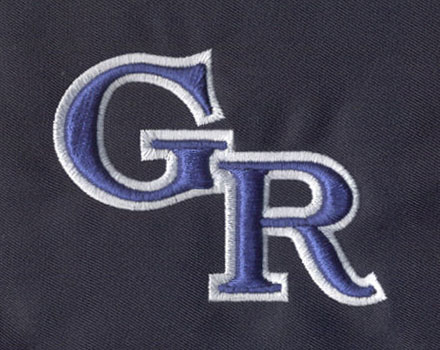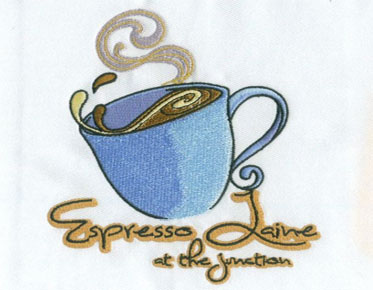The 3D Puff Digitizing Guide for Embroidery
3D
puff embroidery digitizing is a
great way to add extra detail to your designs. You can use it for hats,
t-shirts, pillows, and more! Our guide will walk you through the creation
process so you can learn how to create these impressive embroidered designs for
your own products.
The 3D embroidery effect you see on the hat is due to the use of 3D embroidery foam. Puff embroidery allows for greater design height and depth, producing the final 3D effect. If you're looking to create these puff designs yourself, this is the machine for you: it does not require special tools or embroiders with special skills.
What is 3D Powder Puff Digitizing?
This
is a technique used to create prominent 3D designs on clothing such as hats.
The practice of 3D puff digital has been around for a long time, but in the
last 2-3 years there has been an increase in interest in the art.
The secret behind all the best 3D puff designs is the special foam used behind the embroidery. It's a 3D foam made from EVA, and the purpose of the foam is to provide size for embroidery.
You can machine wash 3D foam, it is non-toxic and waterproof. The foam is available in a variety of colors, including: black, blue (providing different shades), gray, soft pink, red, purple, white, yellow.
To create the best design, you need to use 3D Puff embroidery digitizing software, such as Wilcom Embroidery Software. There will be a learning curve, and there are many tutorials available. Take the time to learn how to use all the different features so that you can create amazing results.
After you have finished creating the 3D Puff embroidery artwork, you will use the software application to create the machine ready file. Creating the perfect design takes a lot of skill, so be prepared to spend hours researching and learning to use digital software properly.
3D Powder Puff digitizing tips
1.
Determine the size of your design
Before
you begin digitizing 3D embroidery using software, you need to determine the dimensions
of your design. Maybe you want a 2 - or 2.5-inch height design? This is
important because the art files in the software need to be resized to fit your
design dimensions.
2. Tie-in and tie-off stitching
Next,
you must set the correct value for the tie splice. Typically, there is a menu
where you can find property options to make the necessary adjustments. You
should see the Bind and Bind option, which we recommend you set to 5. This
means there will be 5 stitches for lashing and 5 stitches for lashing.
The reason you want to choose 5 is because it's the best setting we found and works perfectly with the thickness of the 3D foam. The thread must be completely firm during the embroidery stage.
3. Start puff digitizing
Now
it's time to start digitizing the design. We recommend that you start
digitizing with the "Walk Stitch" set to 20 points. This will help
hold the foam in place on the fabric of the garment.
For best results, you want to keep the walking stitch in line with the edge of the puff design. At this point, you must digitize the 2-level walk splicing inside the design.
4. Satin stitching
You
must use satin stitching in the puff embroidery design as it will produce the
raised 3D effect you are looking for. The satin seam will cover the 3D foam and
you must close the ends in a safe manner.
3D puff embroidery machines use the piercing power of a needle to remove any excess 3D foam. Therefore, you must also add satin stitches to the top and bottom of the design. If you don't, the foam is likely to come off the garment easily. You can use the "capping" or "kneading" method to close the satin stitching.
Using the capping method, you will digitize a smaller dot satin stitch that is perpendicular to the end below the top final satin stitch. The kneading method is that you change the direction of the last top satin stitch so that the needle penetrates around your design.
For this example, we will select the upper limit. Go to the menu and select Capping options. Set it to close the ends by attaching the walking stitch of the wiring in the middle of the threaded path. Select a 3-point density here.
5. Top satin stitch
You
need to aim for a puff design that provides even density here. We recommend
that you choose 1.8 points and then choose 200 lb fill, which will enable you
to "stitch larger lines".
Your software will have the option to do this, so don't worry if it doesn't make much sense right now. We recommend that you disable "short stitch" and then finally center the design so that you can save it in the correct format.
Important points for attention of 3D powder puff digitization
Don't
try to sew the puff part of the design first. This is the last thing you need
to sew. To begin the process, place the 3D foam on the garment. Then sew all
the flat parts to ensure they are securely attached to the garment.
When the needle penetrates the 3D foam hole, it punches the hole. After sewing, you will find that any excess items will be pulled away. The raised look you design needs to be bulky in appearance in order for the 3D foam to give you the look you want.
You will need to choose a satin stitch design from 3mm to 11mm in width. Your design will determine the correct width. If you plan to use letters in your 3D puff embroidery design, then we recommend that you use alphabetic text. You need to modify these to properly handle the foam and prevent any open ends.
It's not a good idea to try 3D puff embroidery with smooth or delicate fabrics. The first reason for this is that these types of fabrics are more susceptible to what is called "in-hoop" motion when using 3D foam. The second reason is that these materials generally cannot handle the stitch density used in puff embroidery designs.
Therefore, it is best to use 3D puff embroidery on more stable and thicker fabrics, such as those used to make baseball caps. We recommend that you do not attempt to embroider on towels, as 3D effects tend to fade quickly.
We specialize in creating the highest quality 3D puff digitizing. We have a wealth of experience and our digital professionals are the best. It is difficult to obtain the correct 3D puff design, but we make it easy for you.



